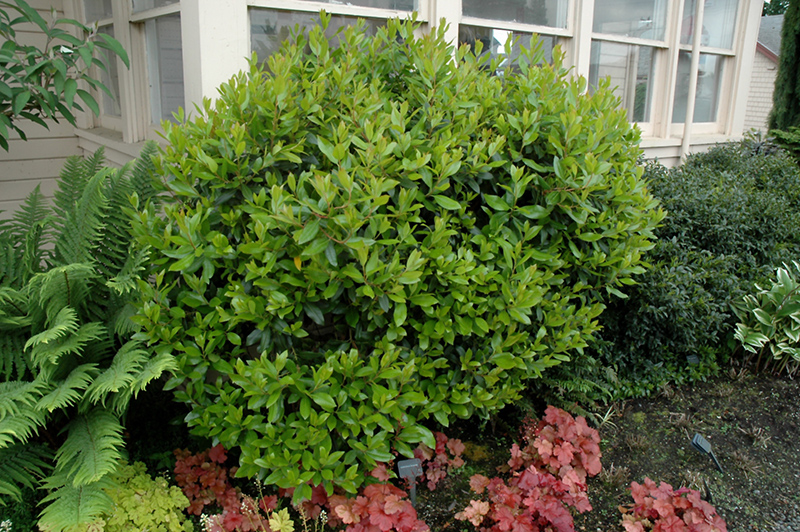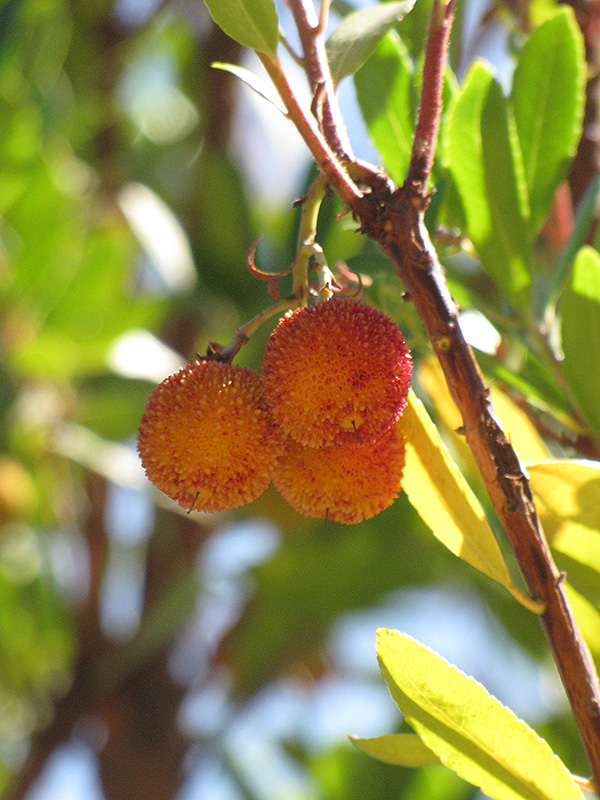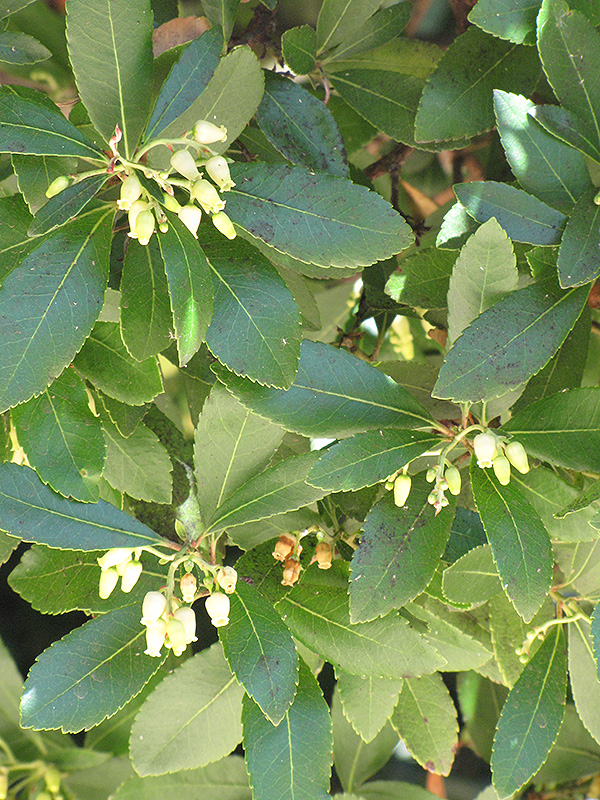Find Plants
Dwarf Strawberry Tree
Arbutus unedo 'Compacta'
Height: 5 feet
Spread: 5 feet
Sunlight:
![]()
Hardiness Zone: 6
Other Names: Apple of Cain; Cane Apple
Description:
An interesting smaller version of this evergreen tree great for smaller spaces; pendulous clusters of flowers are produced in autumn followed by edible red fruit; drought tolerant but best when watered; deep rooted for soil retention
Ornamental Features
Dwarf Strawberry Tree features showy clusters of white bell-shaped flowers hanging below the branches in mid fall. It has green evergreen foliage which emerges light green in spring. The glossy oval leaves remain green throughout the winter. The peeling brown bark and red branches are extremely showy and add significant winter interest.
Landscape Attributes
Dwarf Strawberry Tree is a dense multi-stemmed evergreen shrub with an upright spreading habit of growth. Its relatively fine texture sets it apart from other landscape plants with less refined foliage.
This is a relatively low maintenance shrub, and should only be pruned after flowering to avoid removing any of the current season's flowers. Deer don't particularly care for this plant and will usually leave it alone in favor of tastier treats. It has no significant negative characteristics.
Dwarf Strawberry Tree is recommended for the following landscape applications;
- Accent
- Mass Planting
- Hedges/Screening
- Rock/Alpine Gardens
- General Garden Use
Planting & Growing
Dwarf Strawberry Tree will grow to be about 5 feet tall at maturity, with a spread of 5 feet. It has a low canopy with a typical clearance of 1 foot from the ground, and is suitable for planting under power lines. It grows at a medium rate, and under ideal conditions can be expected to live for 80 years or more.
This shrub should only be grown in full sunlight. It is very adaptable to both dry and moist growing conditions, but will not tolerate any standing water. It is considered to be drought-tolerant, and thus makes an ideal choice for xeriscaping or the moisture-conserving landscape. It is not particular as to soil type, but has a definite preference for acidic soils. It is somewhat tolerant of urban pollution. This is a selection of a native North American species.
Disclaimer - This Plant Finder tool is an online resource representing many of the varieties that we carry over the course of the season, and is intended for informational purposes only. Inventory varies seasonally, so we cannot guarantee that every plant will be in stock at all times - please contact the store directly for availability. It does not include our entire inventory of plants, so be sure to visit our store to see varieties that may not be represented on this list.



